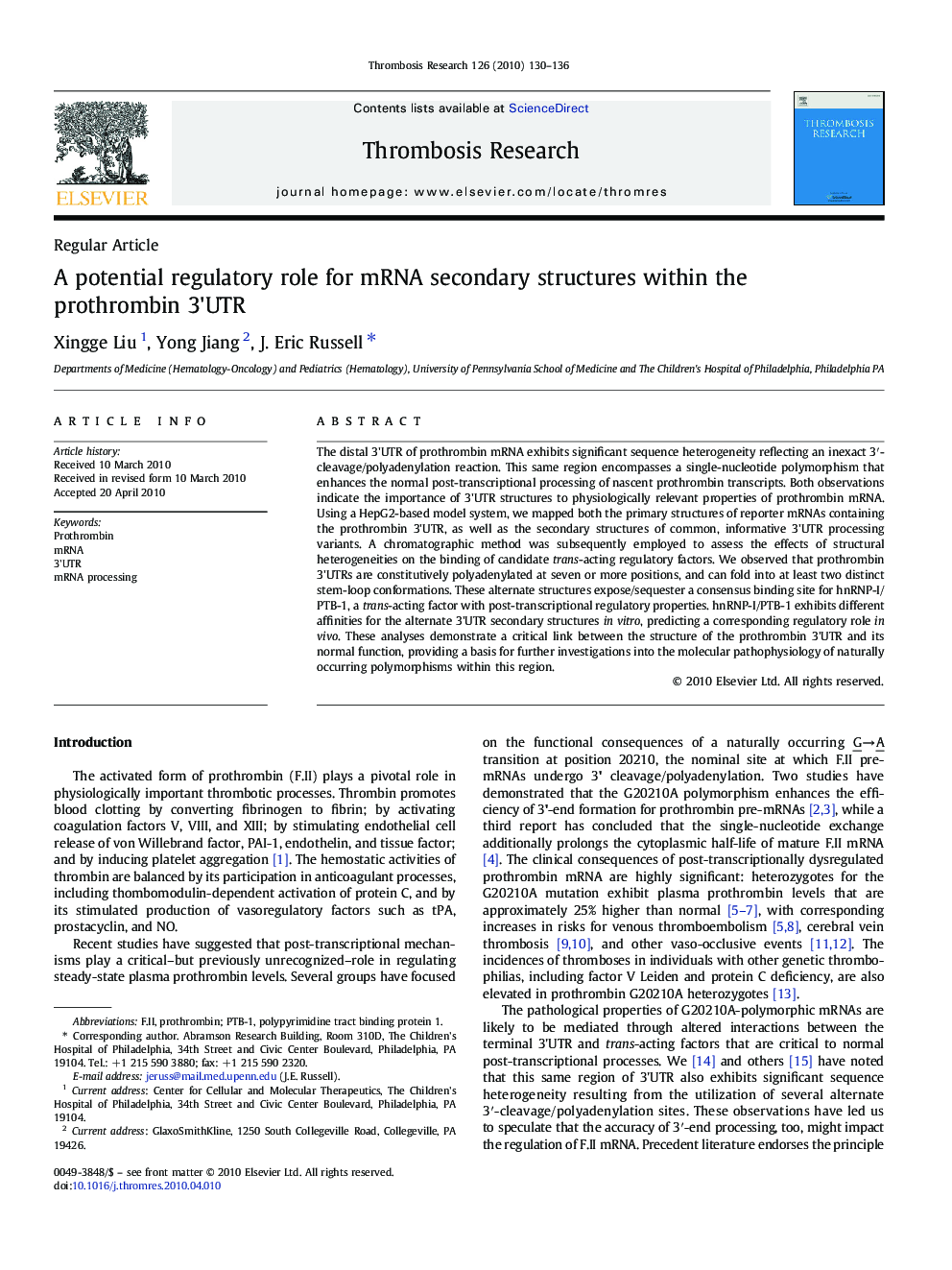| Article ID | Journal | Published Year | Pages | File Type |
|---|---|---|---|---|
| 6003097 | Thrombosis Research | 2010 | 7 Pages |
Abstract
The distal 3'UTR of prothrombin mRNA exhibits significant sequence heterogeneity reflecting an inexact 3â²-cleavage/polyadenylation reaction. This same region encompasses a single-nucleotide polymorphism that enhances the normal post-transcriptional processing of nascent prothrombin transcripts. Both observations indicate the importance of 3'UTR structures to physiologically relevant properties of prothrombin mRNA. Using a HepG2-based model system, we mapped both the primary structures of reporter mRNAs containing the prothrombin 3'UTR, as well as the secondary structures of common, informative 3'UTR processing variants. A chromatographic method was subsequently employed to assess the effects of structural heterogeneities on the binding of candidate trans-acting regulatory factors. We observed that prothrombin 3'UTRs are constitutively polyadenylated at seven or more positions, and can fold into at least two distinct stem-loop conformations. These alternate structures expose/sequester a consensus binding site for hnRNP-I/PTB-1, a trans-acting factor with post-transcriptional regulatory properties. hnRNP-I/PTB-1 exhibits different affinities for the alternate 3'UTR secondary structures in vitro, predicting a corresponding regulatory role in vivo. These analyses demonstrate a critical link between the structure of the prothrombin 3'UTR and its normal function, providing a basis for further investigations into the molecular pathophysiology of naturally occurring polymorphisms within this region.
Keywords
Related Topics
Health Sciences
Medicine and Dentistry
Cardiology and Cardiovascular Medicine
Authors
Xingge Liu, Yong Jiang, J. Eric Russell,
